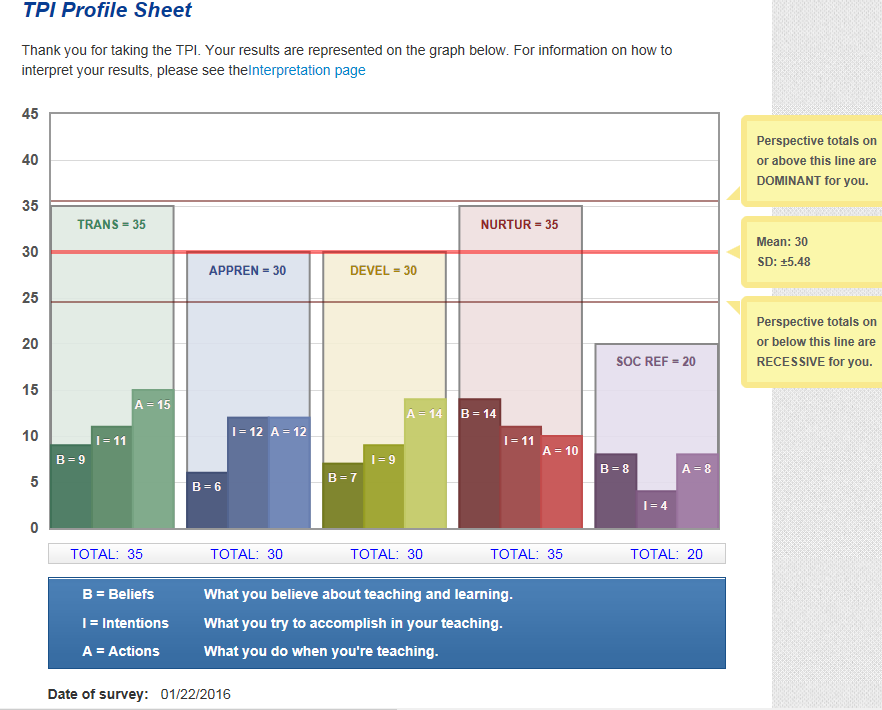Current Facilitation Skill Set
Currently, I am able to design and implement interventions for processes in responding to complex organizational, academic, and organizational issues. These include designing effective programs, utilizing instructional design techniques, program-planning techniques, executing needs assessment, and evaluating adult learning programs. In this regard, I have the aptitude to participate in adult learning, mentoring, training, and accelerate adult learning.
I competently engage learners in previewing knowledge, practice, and material that is the focus of training or instruction. I effectively demonstrate the use of these elements for the learner. I ensure that the objective is attained by engaging the learner in the use of the components. Subsequently, I engage the learner in the evaluation process of the outcomes and consequences of the application of the components.
These skills categorize me in facilitation skill level 4. Level four states that the designing and implementation of process interventions in reaction to complex organizational skills are essential for teachers seeking to equip the learners with requisite skills and self-efficacy for advancement (Deggs 2). I use various tools to promote improvement for the learners, customer intimacy, and overall organizational effectiveness. In addition, I support teams through the various stages of team development to ensure the success of the individual learners.
I have previously trained a team on production floor efficiency and supported them through the various development stages including embracing change and embracing emerging technologies.
Facilitation Style

My overall TPI score generally falls in the 30s. The only exception is the social reform perspective. I strongly believe in transmission as it encourages the learner to acquire and practice the mastery of the content conveyed by the teacher. In essence, I ensure that I play my part by availing timely feedback to the learners and respond to their concerns such as clarifying an entry they did not quite understand. The 35 points score is a good fit for what I believe about teaching adults new skills.
From experience, I concur that individuals become productive and motivated when they are involved in issues without fear of failure. As such, nurturing plays a central role in encouraging learners to overcome past failure and regaining self-confidence (Ingrid et al 50). The 35 points score is a good fit since I believe that determination to achieve is inherent in every human. A little nurturing may lead to the explosion of potential in persons who have failed in the past.
Teaching Orientation Statement
I hold that learner-oriented teaching supports purposeful and enduring learning. Given that I am a teacher, it is my role to actively engage the learners and ensure that they learn the content in its legitimate or authorized form. By assessing the position of the learners in view of mutual learning objectives, I can offer the scaffolding they require to develop links between the understanding they are creating and what they already know.
Summary of Self-Reflection
Pratt’s perspectives are essential for individuals seeking to teach others with the intention of honing their skills and increase productivity in the work environment. In this context, I learned that accurate coverage of the appropriate content and within the allotted time ensures consistency across all the perspectives and teaching objectives. The consistency of what the teacher believes in facilitates the elucidation of the intended skills thereby improving the outcomes (Pratt 3).
These perspectives have also helped me to involve peers and colleagues when evaluating my skills. Prior to taking the TPI inventory and evaluating the results, I perceived myself as possessing all the perspectives. However, the results reveal that I do not fully embrace the social reform perspective.
Works Cited
Deggs, David et al. “The Significance of Teaching Perspectives among Academic Disciplines.” College Teaching Methods & Styles Journal, 4. 8 (2008): 1-8. Print.
Ingrid, Bens. Facilitating with Ease! Core Skills for Facilitators, Team Leaders And Members, Managers, Consultants, and Trainers (3rd ed.). San Francisco, CA: John Wiley & Sons, 2002. Print.
Pratt, Daniel et al. “Development and Use of the Teaching Perspectives Inventory (TPI).” Development and Use of the TPI, (2001): 1-9. Print.